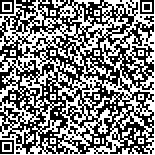附件
|
| 引用本文: | 吉红霞,范兴旺,吴桂平,刘元波.离散型湖泊水体提取方法精度对比分析.湖泊科学,2015,27(2):327-334. DOI:10.18307/2015.0218 |
| Hongxia,FAN Xingwang,WU Guiping,LIU Yuanbo.Accuracy comparison and analysis of methods for water area extraction of discrete lakes. J. Lake Sci.2015,27(2):327-334. DOI:10.18307/2015.0218 |
|
| |
|
|
| 本文已被:浏览 10758次 下载 5162次 |

码上扫一扫! |
|
|
| 离散型湖泊水体提取方法精度对比分析 |
|
吉红霞1,2, 范兴旺1,2, 吴桂平1, 刘元波1
|
|
1.中国科学院南京地理与湖泊研究所, 南京 210008;2.中国科学院大学, 北京 100049
|
|
| 摘要: |
| 基于卫星遥感的陆地水体提取方法多种多样,并且应用广泛.对于水体分布支离破碎的枯水期湖泊,准确的水体提取方法尚不明晰,直接影响湖泊水域面积的提取精度.以鄱阳湖湖区为研究对象,利用ALOS遥感影像,以2.5m高分辨率全色波段融合影像非监督分类(ISODATA)得到的水体面积为参考值,分别使用归一化水体指数(NDWI)法、NDWI-ISODATA法和基于近红外(NIR)的ISODATA法提取了10m分辨率的水体分布,分析了不同方法提取结果之间的差异性及产生原因.结果表明:3种方法均可以较好地提取出水体,但利用ISODATA法提取的水体细部信息更为明显,面积值较NDWI法更大;相对于近红外单波段而言,基于NDWI图像的ISODATA法提取水体的精度更高.纵观3种方法,基于NDWI图像的ISODATA法提取的水体精度最高,基于近红外波段的ISODATA法提取结果次之,NDWI阈值法的提取效果最差.研究结果对于离散型湖泊水体提取方法及数据源的选择等具有重要的借鉴和参考意义. |
| 关键词: 遥感 水体提取 NDWI ISODATA 鄱阳湖 |
| DOI:10.18307/2015.0218 |
| 分类号: |
| 基金项目:国家重点基础研究发展计划"973"项目(2012CB417003)和中国科学院南京地理与湖泊研究所"一三五"战略发展规划项目(NIGLAS2012135001)联合资助. |
|
| Accuracy comparison and analysis of methods for water area extraction of discrete lakes |
|
Hongxia1,2, FAN Xingwang1,2, WU Guiping1, LIU Yuanbo1
|
|
1.Nanjing Institute of Geography and Limnology, Chinese Academy of Sciences, Nanjing 210008, P. R. China;2.University of Chinese Academy of Sciences, Beijing 100049, P. R. China
|
| Abstract: |
| Remote sensing is a widely used technology for water surface monitoring.Currently, there exists no general method for water surface extraction at a dispersed lake, which affects the accuracy of lake area monitoring.For investigation of different methods, this paper uses ALOS multi-spectral data to extract lake surface in Lake Poyang.The reference lake area is obtained by unsupervised classification(ISODATA, Iterative Self-Organizing Data Analysis Technique Algorithm) based on fused 2.5m ALOS multi-spectral data.Subsequently, three methods are investigated based on 10m ALOS data, including Normalized Difference Water Index(NDWI) thresholding, NDWI-based ISODATA method and Near Infrared(NIR)-based ISODATA method.Differences between these extractions are analyzed for intrinsic reasons.The main findings are:(1) all three methods can be used for water surface identification, ISODATA method provides more detailed information and larger water surface area;(2) NDWI-based method performs better than NIR-based method and the extraction accuracy increases;(3) NDWI-based ISODATA gets the most reliable result with R2=0.993 and RMSE=0.115km2, followed by NIR-based ISODATA with R2=0.992 and RMSE=0.144km2, and NDWI thresholding with R2=0.938 and RMSE=0.443km2.The results provide important references for selection of method and data source for water extraction of lake in dry season. |
| Key words: Remote sensing water extraction NDWI ISODATA Lake Poyang |
|
|
|
|